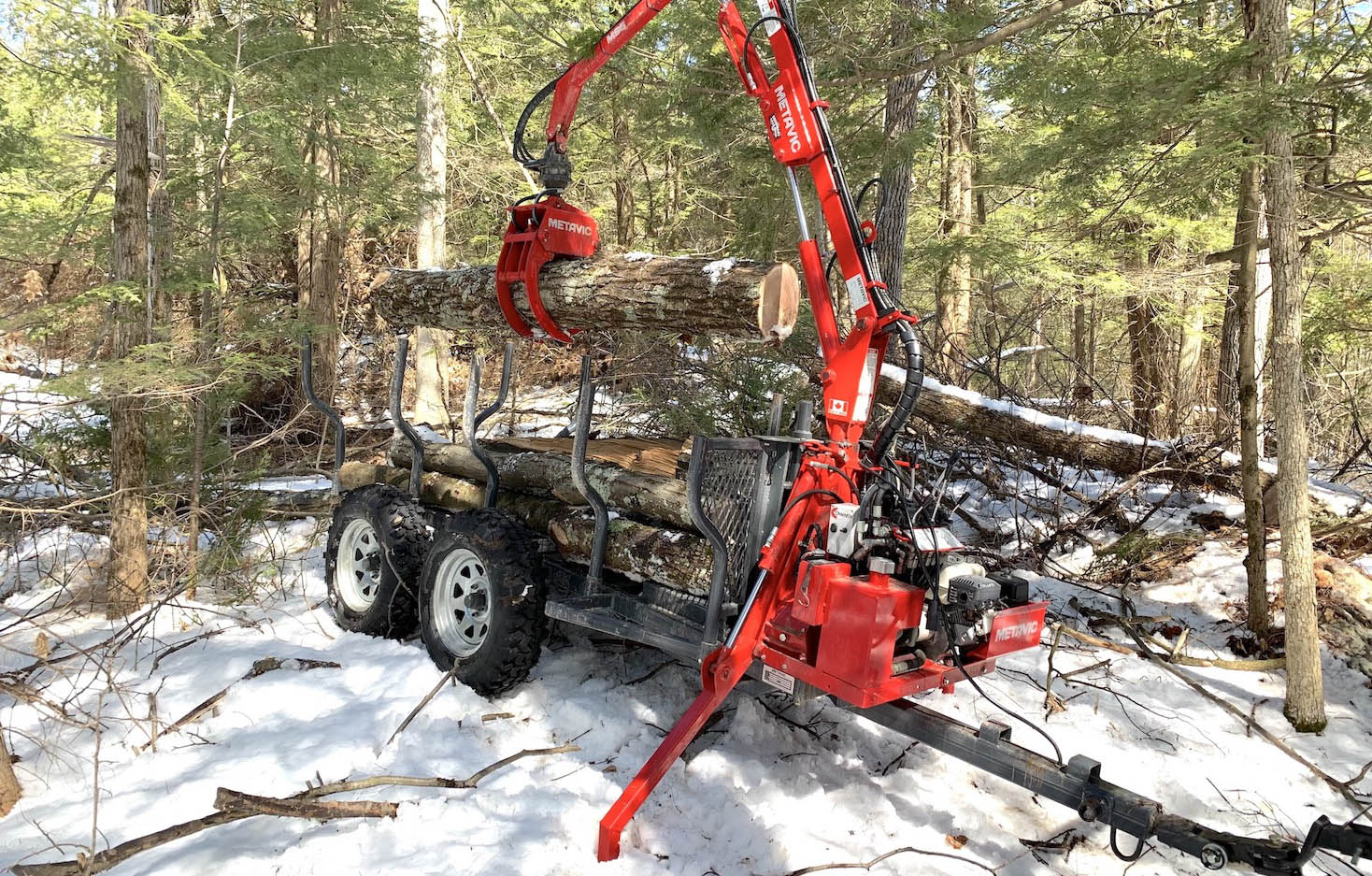
Into the woods with VFF landowner John McNerney
John McNerney takes immense pleasure in working in his family forest in Monkton, and in the nearby Little Hogback Community Forest, which he co-owns with 15 other shareholders. He revels in the tools of careful, small-scale woods work. When he can put those tools to work on behalf of his community, so much the better.
We caught up with him recently at the Little Hogback Community Forest (LHCF) in Monkton. Back in 2007, John was one of 16 community members to buy an undivided share in this 115-acre forest. An experiment in equitable forest ownership and conservation conceived by Vermont Family Forests board member Deb Brighton, LHCF offers the co-landowners the right to enjoy and benefit from carefully conserved forestland—to participate in conservation practices, harvest timber, tap maple trees, hike, camp, and so on.
An active member of the LHCF community, John was in the woods this particular autumn day with Brutus, his 1951 Dodge M37 pickup truck, which he was using to move aspen logs away from a new log landing he and other LHCF members are creating for an upcoming timber harvest. Once he hauled each log close to where he wanted to leave it, he used a peavey to roll it into place.


Though he usually uses his tractor for forest work, it’s quicker to drive from his home to the LHCF forest in Brutus. Once he fixes the brakes, he says, Brutus will be ready to pull his forwarding trailer. Because, as VFF woodsman guru Bill Torrey says, what matters isn’t what you can pull, it’s what you can stop.
John’s tractor is a 33 horsepower, 2001 New Holland TC33D. “It’s too small for someone in the logging business,” he said. “but on the other hand, I can get in to places that larger equipment won’t fit, and it can be pulled by small/mid-sized pickup or SUV. If I ever get a trailer that will hold it,” he added with a grin.
John had the tractor modified for forest work by Tom Burritt at Quality Fabrication in Monkton. Tom added a belly pan to protect the underside, limb risers (diagonal bars running from the front of the tractor to up over John’s head that help keep branches at bay when he’s driving through the forest), and some falling-object protection over the driver’s seat. Most recently, John added a grill guard, prompted by a branch that poked through the tractor grill, stopping just short of taking out the battery and radiator.
John usually uses a Sundown GR40 forestry grapple on the front end of the tractor for moving logs and cleaning up brush. On the back, he has a Uniforest 35E logging winch, rated for 7,700 pounds, for pulling logs to where he can pick them up with the forwarding trailer.

His first trailer was one his neighbor made from an old mobile home axle and scrap steel. It got the job of hauling firewood done, though it was a little wide for easy maneuvering in the woods. His current firewood trailer is a Woodsman dump trailer, formerly made by CAM.
“I think it’s the perfect small trailer for working in the woods,” John said. “It’s only a couple inches over 4′ wide and rated for 3500 pounds. Dumping is via a self-contained electro-hydraulic pump. I pull it with my tractor or behind a small pickup truck.”


John also used those two trailers for hauling saw logs, but had his eye out for something more convenient. “I had always been interested in a small, self-loading forwarding trailer,” John said. “Unfortunately, the cost of one of these in a size that was a good match for my tractor or a mid-sized pickup was just not something I could justify.”
John watched the used equipment ads for years. His persistence paid off with a barely used Metavic M95 forwarding trailer with a hydraulic winch and a gas engine to power the hydraulics. John explained that the standard set-up is to connect the trailer to tractor hydraulics. The gas engine allows the loader and winch to operate when being used with a pickup or other tow vehicle.

“This has been great when I’m picking up logs donated to the Monkton WoodBank,” John said. He and other LHCF shareholders started the wood bank many years ago, setting aside some of the firewood they harvested and split each year and making it available to community members in need. LHCF shareholder and University of Vermont professor Cecilia Danks began bringing her students down for a day each fall to help split the wood bank log rounds into firewood. Then LCHF member Lee Kauppila got appointed to the Monkton Energy committee to grow the firewood donation program into a community-wide effort.
Over the years more than 70 community members from Monkton and the surrounding towns, along with a similar number of UVM students, have contributed in some way to the Monkton WoodBank—donating wood, processing logs into firewood, assisting with deliveries, building storage racks, or making financial donations.
As we talked together on that blue-sky autumn day, standing near a pile of logs earmarked for the wood bank, John sported his VFF t-shirt. On the front of that shirt are the words “Forest Friend.” Surrounded by the fruits of that long friendship, it was hard to imagine a more fitting title.







